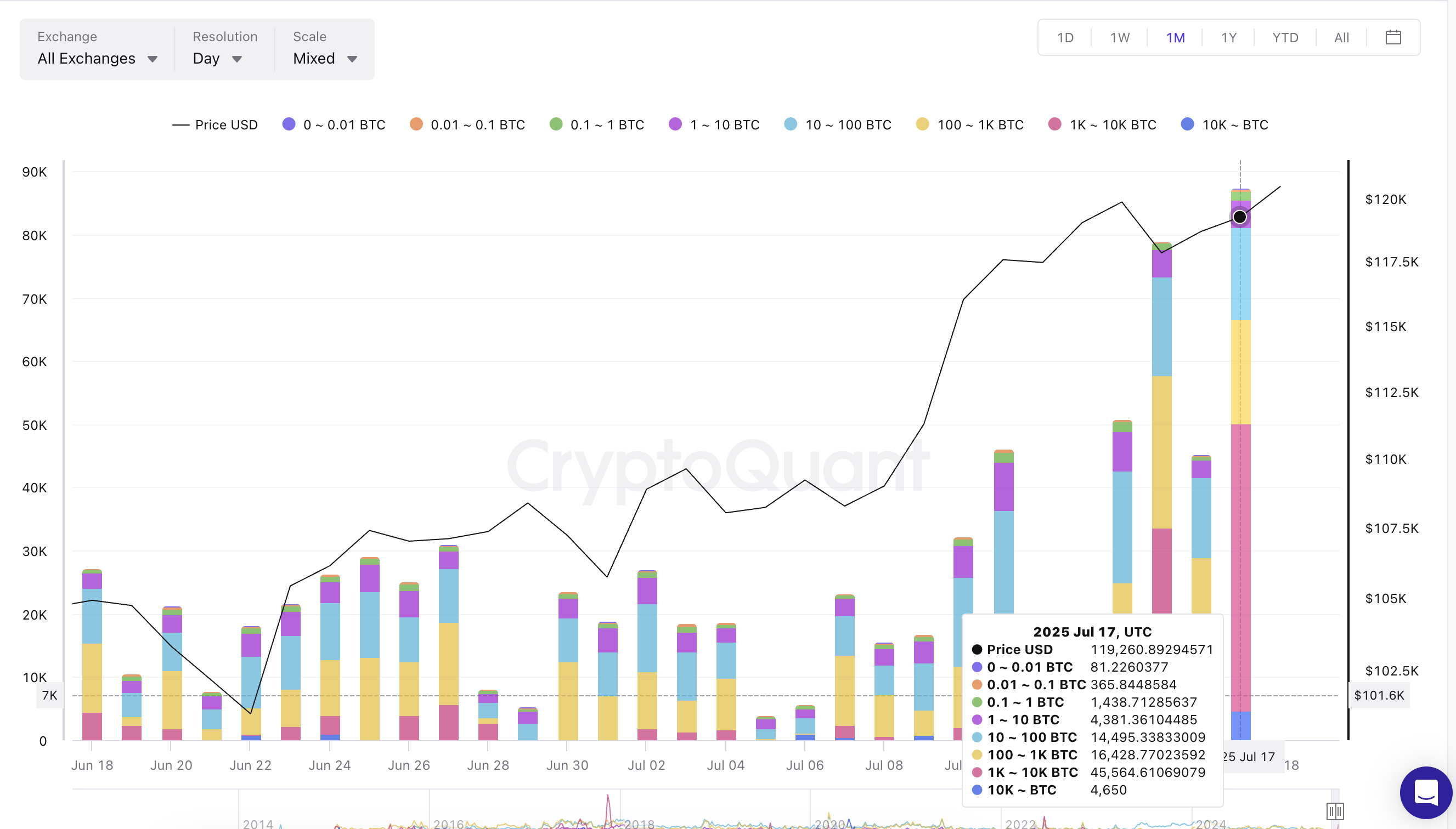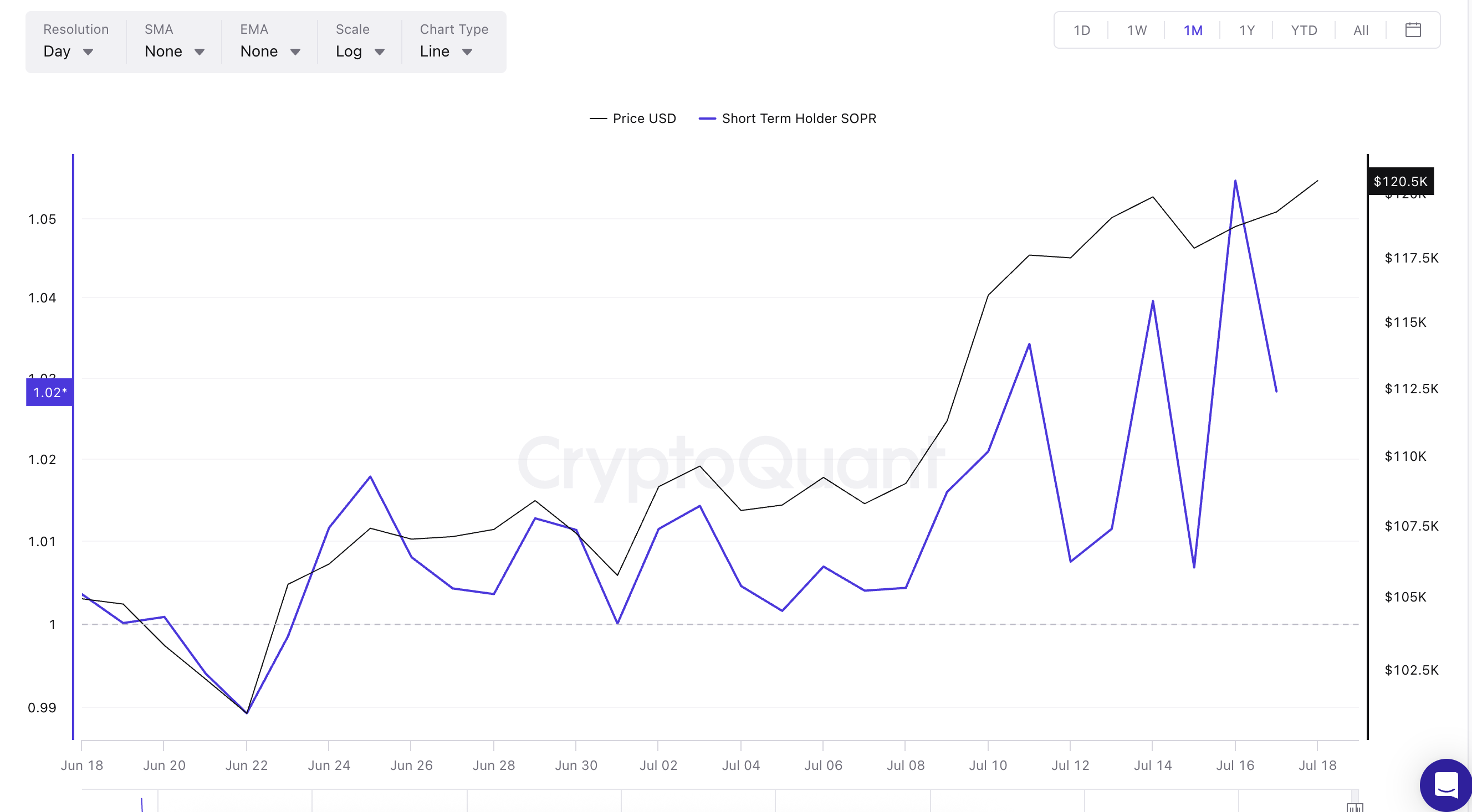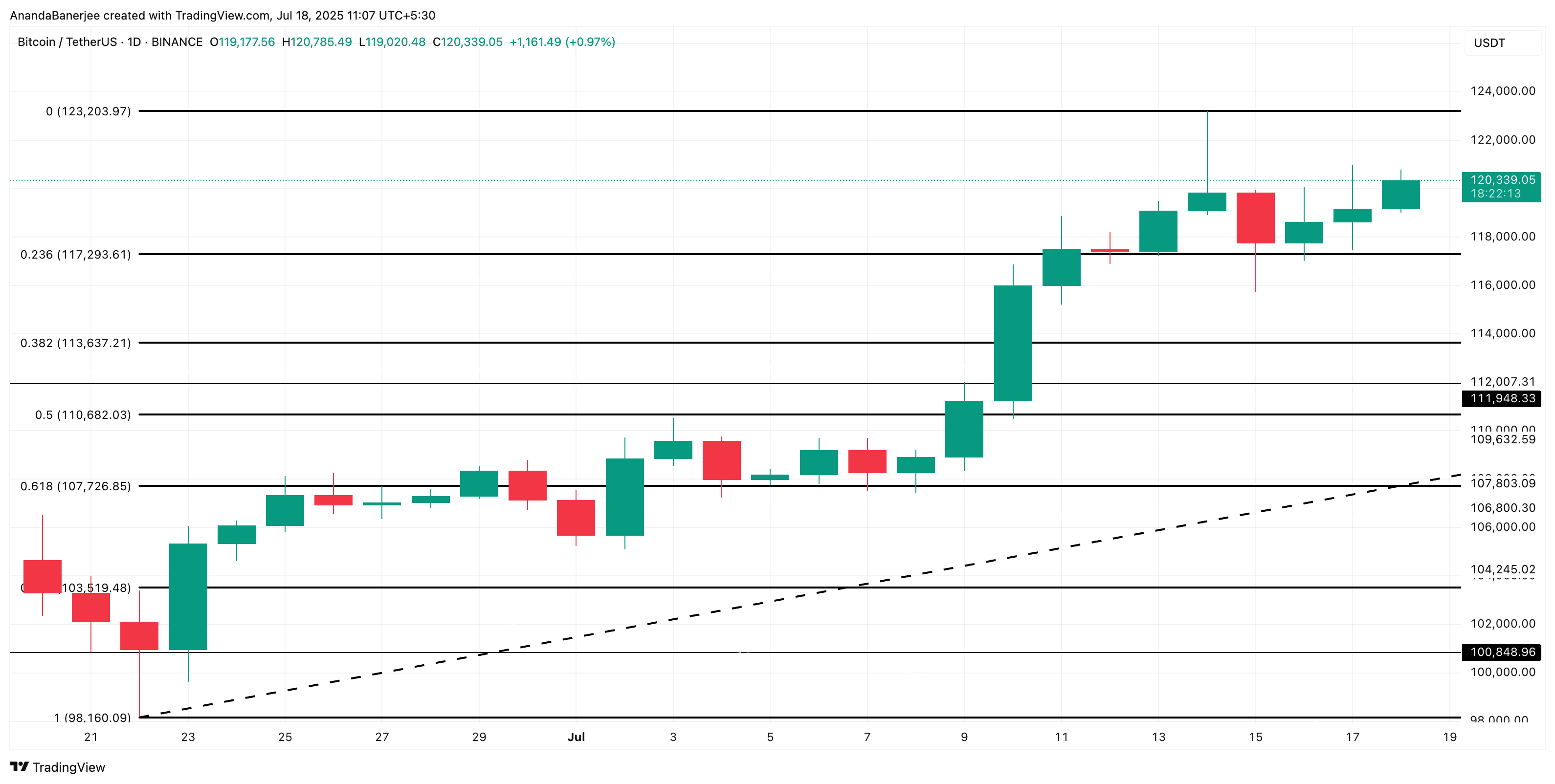-
Bitcoin faces potential short-term sell pressure as over 50,000 BTC from whale wallets hit exchanges on July 17, signaling increased liquidity for sellers.
-
Retail traders appear to be realizing profits, with the short-term Spent Output Profit Ratio (SOPR) peaking at 1.05, indicating a cautious market sentiment.
-
According to COINOTAG data, Bitcoin is trading between $117,000 and $123,000, with a possible dip expected before a rebound, contingent on whale inflows cooling off.
Bitcoin’s whale-driven exchange inflows and elevated SOPR suggest a short-term price dip near $117K before potential recovery, highlighting key market dynamics.
Whale-Led Exchange Inflows Raise Red Flag
Bitcoin’s short-term momentum may be under pressure again; this time from its largest holders. On July 17th, wallets holding between 1,000 and 10,000 BTC (classified as whales) and those with over 10,000 BTC (mega whales) collectively moved approximately 50,200 BTC onto exchanges. At current prices near $120,000, that translates to over $6 billion in potential sell-side liquidity.

Bitcoin price and whale inflows: CryptoQuant
Historically, these large inflow clusters have preceded price corrections.
A similar spike occurred on July 7th when 2,500 BTC were deposited, coinciding with a $947 price dip from $109,216 to $108,269. Another larger inflow event happened around July 14–15, leading to a ~1.7% decline. This latest surge in whale activity is the largest in over a month and suggests renewed distribution pressure just as Bitcoin struggles near its highs.
Short-Term Holders May Be Taking Profit
Retail behavior is also flashing caution. The short-term holder Spent Output Profit Ratio (SOPR), which tracks whether newer BTC wallets are selling at a profit, surged to 1.05 on July 16, the highest in over a month.
A SOPR value above 1 indicates that holders are, on average, realizing profits. Since that spike, SOPR has dipped slightly to 1.02, showing signs of cooling, but it remains elevated. Earlier SOPR spikes in late June triggered mild pullbacks, suggesting a similar move could be brewing.

Short-term SOPR shows retail sentiment: CryptoQuant
Check for the SOPR line crossing above the price line. In most cases, a similar cross has led to price dips. Something similar happened on July 16.
Bitcoin Price Action at Crossroads, A 3% Dip Likely?
Bitcoin is now trading in a tight channel between $117,293 and $123,203, the latter acting as the previous high. Despite the all-time high forming earlier this month, Bitcoin price has gained only 2% this week while many altcoins have posted double-digit rallies. The market appears to be watching for a decisive move.
But there are some numbers you should be aware of.

Bitcoin price analysis: TradingView
On June 15, a combined 33,663 BTC flowed into exchanges, primarily from whale and mega whale wallets, triggering a 1.7% drop in Bitcoin’s price from $119,857 to $117,835. On July 17, inflows surged to 50,214 BTC, roughly 49% higher than June’s level.
Extrapolating this proportionally, Bitcoin price could face a 2.5% to 3% drop from the current price of $120,000, which would bring it down to the $117,000 range.
This aligns closely with the key support level at $117,293, which has held multiple times in July. If that level breaks, Bitcoin’s next major support appears around $113,637, per the Fib extension indicator.
This short-term bearish thesis would be invalidated if whale inflows decline, and short-term SOPR (Spent Output Profit Ratio) continues cooling down toward 1.00, signaling waning profit-taking pressure. A reclaim above $123,203 would flip short-term momentum back in favor of the bulls.
Conclusion
Bitcoin’s current market dynamics reveal a cautious environment shaped by significant whale activity and profit-taking from short-term holders. The substantial BTC inflows to exchanges and elevated SOPR levels suggest a probable short-term price correction near $117,000. However, sustained declines in whale inflows and a cooling SOPR could quickly restore bullish momentum. Investors should closely monitor these key indicators for signs of market direction and adjust strategies accordingly.
